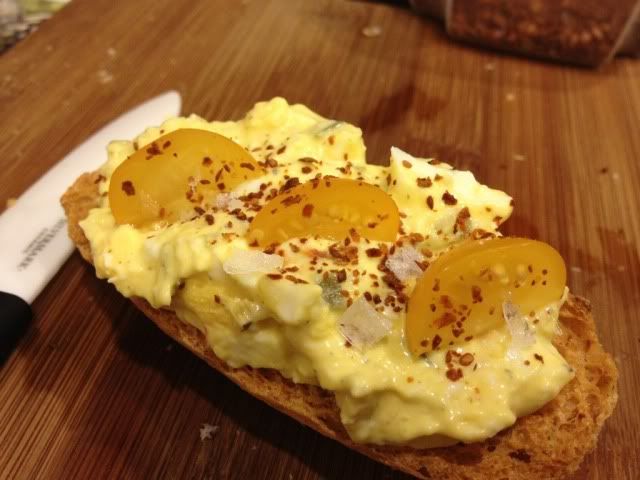I think you'll find it indispensable. E.g., I made egg salad yesterday. For most typical salads of this kind (chicken or other meat salads, potato salad, macaroni salad, et al.) I prefer a base of plain, non-fat yogurt - with just a bit of mayo, and then whatever other ingredients I choose to add.
Yogurt, being substantially thinner and less structured than mayo, especially my preferred yogurt (TJ's European style) can make the finish soupy if I do not add additional binders in adequate quantity. I often do not wish to as they can alter the result I'm seeking. Yesterday's egg salad (hard-cooked eggs, yogurt, mayo, Dijon, olive tapenade, pickle relish, white pepper) was very loose and mushy. Not wanting to alter the flavor yet tighten it up substantially so that it would hold its shape/texture, xanthan to the rescue. You can easily see the results:
[Tapa of egg salad with yellow cherry tomato, Aleppo pepper, Maldon salt - on
mulino bianco, a terrific Italian toast]
The trick is to add very small quantities at a time, allowing some time in between. Because of xanthan's shear force characteristic (the mixture will get thinner when shear forces are applied, like whisking or shaking) it is the time in between one needs to focus on to see the results. When shear forces stop the mixture will tighten. Then make your judgment as to whether more is necessary.

